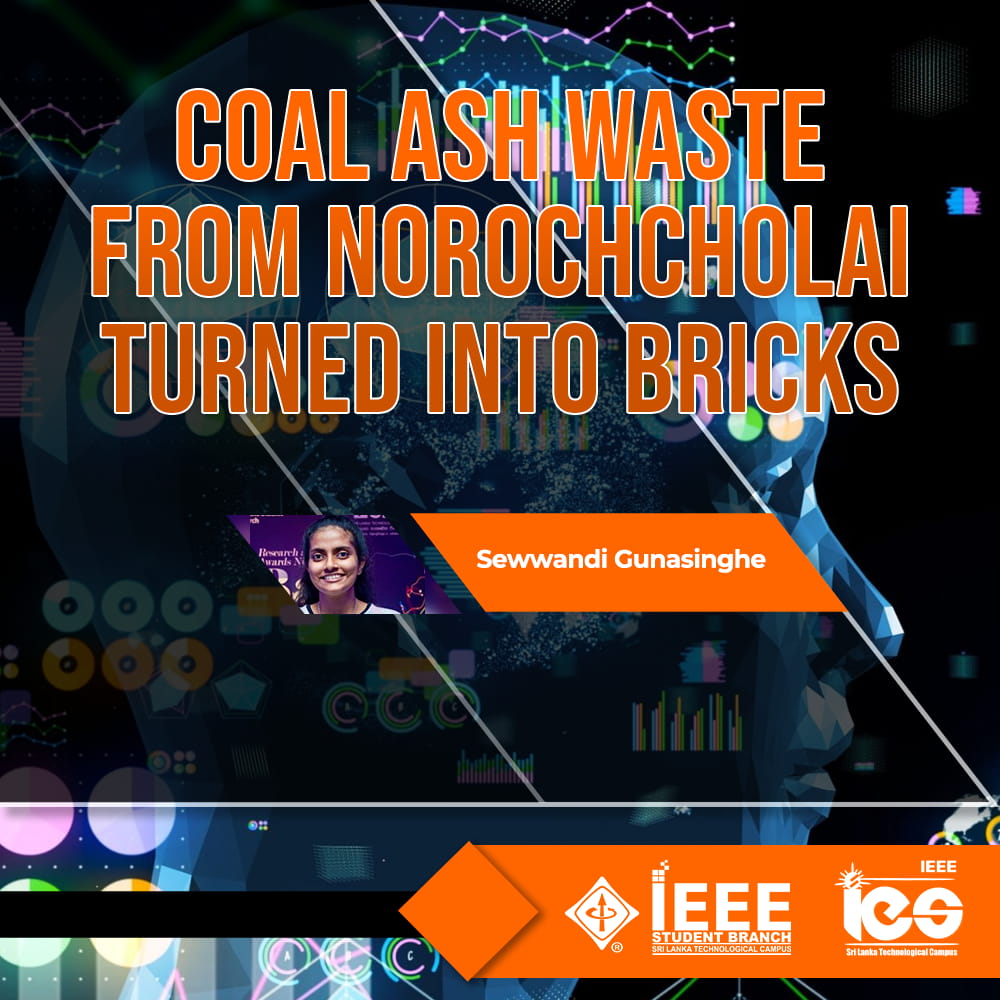



Sri Lanka’s first coal-fired thermal power plant and the largest power plant, the Lakvijaya Coal Power Plant more commonly known as the Norochcholai Coal Power Plant (NCCP) is located in the village of Narakkali and Penaiyadi near Norochcholai, within Puttalam District. The power plant was proposed by the Ceylon Electricity Board (CEB) in 1995 and the construction had 3 phases and was completed by September 2014 with a total power generation of 900MW.The electricity is produced using a steam turbine which is capable of producing 300MW in the plant. As the fuel coal is used to produce steam that will then be used to rotate the turbine at a speed of 3000rpm.Imported coal should be ground as a powder before it is burnt. Five mills grind the coal and four ball mills work at a time while another one is on standby. Coal Fly Ash is deposited as a byproduct in this process.Coal Fly Ash is produced in a coal-fired thermal power plant each and every second of a power plant’s operations. Most of this emitted fly ash is collected through trapping devices but the problem is not having a proper disposal method. Since the monsoon winds have often carried the ash again towards the landside, agriculture around the factory was disrupted. In such a situation Senior Professor Eng. Ranjith Dissanayake of the University of Peradeniya introduced the AAC technology to build bricks from this coal fly ash. Fly ash bricks are made mainly using three materials, fly ash, calcined gypsum, and lime as minerals. By mixing all the raw materials and pressurizing them in a machine gives the brick as the outcome. Since 70% of the mixture consists of coal fly ash, it is a productive method to reduce environmental pollution and health hazards. Normally the size of a brick is 24” ×6” ×8” other than bricks with 6”, there are 4” or 8” wide bricks as well. These coal fly ash bricks are light but very high in strength and cheaper than other bricks. It is a huge advantage for the construction field as they reduce using 15% of wire, plastering cost by 30% and sand. Since coal fly ash is also used as sand for manufacturing of concrete items helps to reduce clinker imports. On the other hand, by putting fly ash to productive use, they reduce water, air, and soil pollution. Thus, the waste of the power plant has become a main raw material to other industries in an eco-friendly manner. Indirectly, manufacturing bricks from coal fly ash is an environmentally beneficial innovative approach that can give additional income and is able to save huge foreign exchange to the country. This movement illustrates the advancement of science and technology that lead to the development of a country.
Indirectly, manufacturing bricks from coal fly ash is an environmentally beneficial innovative approach that can give additional income and is able to save huge foreign exchange to the country. This movement illustrates the advancement of science and technology that lead to the development of a country.